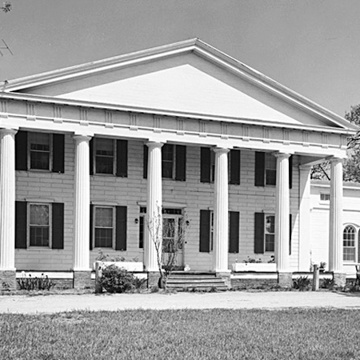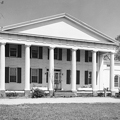You are here
Thomas England House Restaurant (Woodlawn)
Few stately, temple-fronted, Greek Revival homes survive in Delaware. The pedimented portico was added to this two-story house in 1853 for George W. Cummins, whose family prospered through ownership of boats and wagons for agricultural trade with Philadelphia. Cummins was one of the wealthiest citizens in Kent County, with 2,500 acres under cultivation. The portico with its six fluted Doric columns is of wood imitating stone, with beveled joints incised in the planks of the walls and the whole coated with sand-textured paint. The additions disguise an older house: a log structure later given a frame upper story. The original section, which can be seen behind and to the right of the portico, was subsequently extended in brick. The ensemble is an excellent example of what historian David Ames calls “the Delaware evolved house,” in which major nineteenth-century additions made no effort to resemble the original style. Woodlawn now houses a restaurant.
Writing Credits
If SAH Archipedia has been useful to you, please consider supporting it.
SAH Archipedia tells the story of the United States through its buildings, landscapes, and cities. This freely available resource empowers the public with authoritative knowledge that deepens their understanding and appreciation of the built environment. But the Society of Architectural Historians, which created SAH Archipedia with University of Virginia Press, needs your support to maintain the high-caliber research, writing, photography, cartography, editing, design, and programming that make SAH Archipedia a trusted online resource available to all who value the history of place, heritage tourism, and learning.







